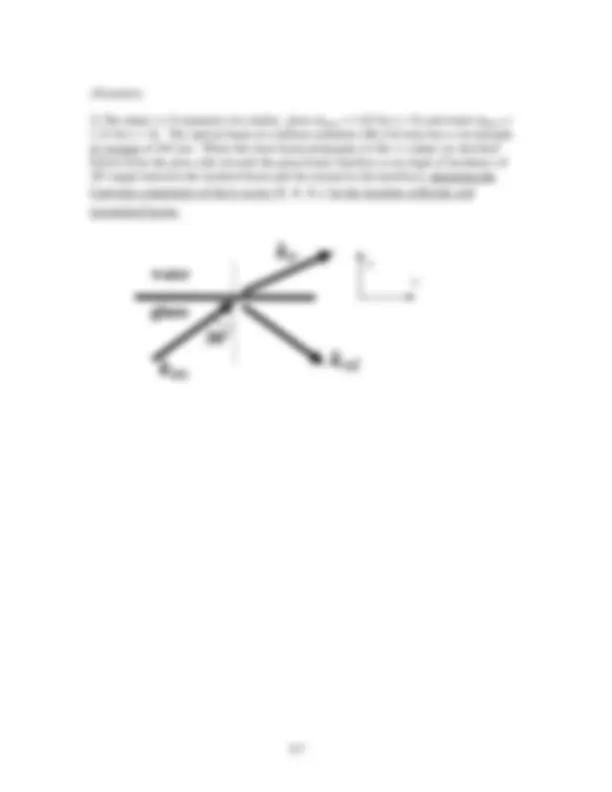





Study with the several resources on Docsity

Earn points by helping other students or get them with a premium plan


Prepare for your exams
Study with the several resources on Docsity

Earn points to download
Earn points by helping other students or get them with a premium plan
Community
Ask the community for help and clear up your study doubts
Discover the best universities in your country according to Docsity users
Free resources
Download our free guides on studying techniques, anxiety management strategies, and thesis advice from Docsity tutors
Material Type: Exam; Class: OPTICS; Subject: Physics & Astronomy; University: University of Louisville; Term: Unknown 1989;
Typology: Exams
1 / 7

This page cannot be seen from the preview
Don't miss anything!




Mid-Term Exam 1 – PHYS 355 - OPTICS
Mendes, Fall 2008, Oct 02, 2008
Start time: 9:30 a.m.
End time: 10:45 am
Open textbook, notes, homeworks, and quizzes
Calculators allowed; no other electronic device allowed
Where it is appropriate, make sure to provide physical units to your numerical answer
i t x y z
⎡ ⎣ (^) × − + − × ⎤⎦
(5 points) a) Determine the time period of a full cycle.
(5 points) b) Calculate the phase velocity of this electromagnetic plane wave when propagating inside this medium AND when propagating in vacuum.
(5 points) c) Calculate the refractive-index of the medium in which this electromagnetic wave is propagating.
(5 points) d) Calculate the wavelength of the electromagnetic wave when propagating inside this medium AND when propagating in vacuum.
(5 points) e) Find the equation for planes of constant phase.
(5 points)
f) Prove that the k
-vector and the electric field E
are perpendicular to each other.
(solve ONLY TWO out of g1, g2, and g3 , 15 points each, 30 points total )
g1) Show that the electric field described above is a solution of the wave equation.
g2) Find the Cartesian components of the magnetic field associated with this electromagnetic wave.
g3) Find the average power per unit area that one would measure for this electromagnetic wave.
(30 points)
transmitted beams.
z
x
A material with a continuously varying refractive-index (also known as a graded-index material) can be modeled as a stratified stack of multiple parallel layers. Consider that 10 parallel layers of equal step in refractive-index are used to model a particular graded- index medium varying from 1.60 to 1.50, as shown below. For light incident from air, n (^0) = 1.00, at an angle of incidence of θ 0 = 30º, calculate the angle of refraction θ 10 that the light beam exits at the last interface of the stratified model.